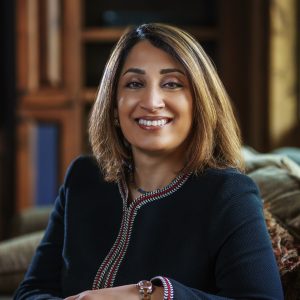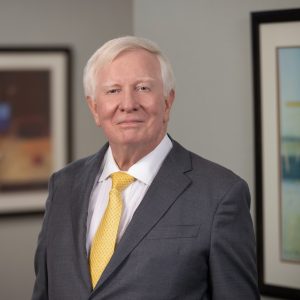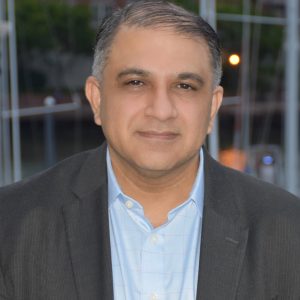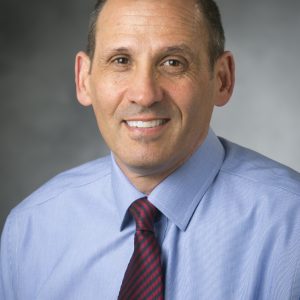CEO Leadership Series: Ivan R. Sabel, Chief Executive Officer, Orthotic Holdings Inc.
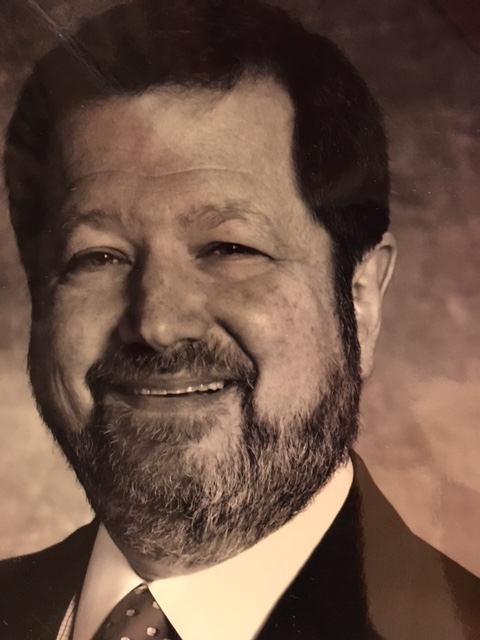
PASSION FOR PATIENT CARE HELPS BUILD BUSINESS
As the CEO of Orthotic Holdings Inc. (OHI), Ivan R. Sabel draws on his experience as both a practitioner and a businessman, roles he’s embraced since the beginning of his career, to meet the challenges of managing a growing organization with nearly 500 employees.
Mr. Sabel developed his leadership skills on the fly – running his own orthotics and prosthetics practice in Bethesda, Md., and fitting wounded soldiers with prosthetics at Bethesda Naval Hospital during the Vietnam War. Later, he set his sights on consolidating the Washington, D.C., region’s solo orthotics and prosthetics practitioners with one of the biggest local providers, Hanger Orthopedic Group.
In an interview with Ashton Tweed, Mr. Sabel explains why he left thriving Hanger to invest in and lead OHI, an orthotic supplies and manufacturing company:
How did you become interested in orthotics and prosthetics?
Both my dad and grandfather manufactured orthopedic footwear. It was sort of assumed by all of us – my dad, my grandfather and me – that I would succeed them as the third generation in the orthopedic footwear business. I’m a graduate of the Valley Forge Military Academy, near Philadelphia, and I was seriously contemplating pursuing a military career – looking at West Point specifically. But simultaneously with my starting to apply to colleges, New York University started a new program in prosthetics and orthotics. My mom was never thrilled with the military option and told my dad that this may be something I should be pursuing. Quite frankly, at 17 years old I couldn’t even spell prosthetics and orthotics let alone know what they were.
But I applied to New York University and got in. I was actually in the second class, and among the first 10 graduates, to earn a bachelor of science degree in prosthetics and orthotics. I graduated in 1967 and did my residency in Washington D.C. Then I started my own practice in 1969 in Bethesda, Md.
It turned out that you were in the right place at the right time. Why?
When I was in Bethesda in 1969 it was the height of the Vietnam War. I became the go-to prosthetist at the time for the Bethesda Naval Hospital. I had been trained specifically to do immediate post-operative prosthetic fittings, which in those days was not routine practice. So I was in the operating room applying prosthetics to amputees literally while they were on the operating table. My career got off to a rather frenzied start because of the volume of patients coming back to Bethesda Naval Hospital from Vietnam.
How did this experience affect you?
Here I was treating young men who were basically my age. Emotionally it was pretty powerful because, you know, it could have been me on that table. I just happened to have a skill set that kept me out of that war.
At the same time, your own practice and reputation was also growing.
Yes, I had a really thriving practice called Capital Orthopedics. I had three offices—Bethesda, Shady Grove and a third office at Georgetown University. I was affiliated with the faculty at Georgetown University as a clinical instructor, and my first celebrity patient happened to be Ted Kennedy Jr., who had lost his leg to cancer.
How did you become head of Hanger Inc.?
I really started to think about my next step in the field. Back in the 1980s, I recognized that a lot of solo physician practices were consolidating into larger group practices. There was also some hospital consolidation and third-party payor insurance consolidation. So I figured sooner or later my little field of orthotics and prosthetics, which was primarily mom-and-pop practices along with a couple of larger regional players, would be next. Hanger was one of those regional players. So my goal was to try and consolidate the Hanger entities—at the time four independently owned regional practices, some of them tracing their roots back to the original founder, James Edward Hanger. Supposedly the first Civil War amputee, Hanger was a young engineering student who lost his leg and ended up inventing what ultimately became the first articulated device, which made him famous and in demand. Hanger built a pretty sizable company at the time, but the company split in the 1930s into what ultimately became the four independently owned regional companies. My goal was to put them all back together under one company and, at the same time, consolidate a bunch of the mom-and-pop practices that were similar to mine.
Why did you make that move?
I believed that, if the mom-and-pop model was going to survive, we needed to consolidate. I was lucky enough to get financial backing from Wall Street to launch what I call ‘modern-day’ Hanger. Modern-day Hanger has since grown to over 850 practices.
Did you have trouble convincing the individual orthotics and prosthetics practices to join Hanger?
The orthotics and prosthetics practices saw the consolidation as an opportunity to continue practicing their specialty. Quite frankly, these practices didn’t have a lot of value outside of the cash generation that produced a living for each one of the practitioners. They had no intrinsic business value, so what I did was create an intrinsic business value that they could take advantage of.
What was your biggest challenge at Hanger?
Managing thousands of employees. The human factor is key to any business, but even more so in a business like Hanger because it’s a personal service business. What I find most exciting is mentoring people into becoming better employees or leaders. If I see potential in someone who’s not meeting the standards, the easiest thing in the world is to just fire somebody. It’s a lot harder to try and develop them. I love that challenge. They’ve got the basic raw materials, so to speak, they just need to be honed.
Also, the relationship between the patient and the practitioner is key to the success of this kind of company. A patient of a Hanger practitioner who moves to ABC Company in all likelihood is going to follow that practitioner. So the challenge was making sure the staff was motivated, rewarded properly and managed effectively, so there wasn’t significant turnover.
Of course, I had a bit of an advantage because I came from the practitioners’ ranks. I understood exactly what the practitioners contributed and did every day, and I appreciated that, in contrast to someone who knows only the business side.
What business-related learning experiences have helped you along the way?
When I first joined Hanger it was a much smaller business and I had much more control. To some degree I don’t like to delegate and I like to know what’s going on; I’m a little bit of a control freak. I learned that as a company grows, a good leader has to delegate—you can’t do everything yourself, it’s just impossible. So, for me, giving up control and trusting folks on the team around me was a learning experience.
Another thing I learned was that, as the company continued to grow, any movement or change that I wanted to make was going to happen relatively slowly because the organization became more complex from a regulatory and compliance standpoint. In a small company you can do a lot of things by the seat of your pants. But in a large company, particularly a publicly traded company, that isn’t possible.
The analogy I used at Hanger was that when I started I had a bit of a speedboat on my hands and by the time I retired I had a pretty large ship. When you have a speedboat, you turn left and the boat turns left immediately. When you have a big ship, you turn left . . .and you wait and you wait . . until the boat eventually turns left.
Did you find that frustrating?
Yes, because at heart I’m an entrepreneur. One of the joys of my current venture is that, while it’s not a small business, it’s nowhere near the size of Hanger, so I can effectuate change relatively quickly.
As an entrepreneur, what advice do you have for other entrepreneurs who struggle to keep an eye on the big picture?
Entrepreneurs tend to be down in the weeds because they tend to micromanage. You have to get your head out of the weeds. It’s really cultural change that you have to go through if you want to grow your business. It’s not for everyone, by the way. But you have to ask yourself, “how far do I want to stretch myself out of my comfort zone?” If you want to be the CEO of a larger enterprise, you can’t stay in the mom-and-pop comfort zone.
How exactly do you get out of the weeds?
You have to learn how to attract the right talent and then delegate. You have to learn how to be a conductor and not necessarily the musician. You’re conducting the orchestra, you’re not playing the instrument.
Why did you leave Hanger for OHI?
I retired as CEO of Hanger in 2008 for a couple of reasons. One, at the time we were struggling with a succession plan so I wanted to step down a little early to give my second-in-command time as CEO. I remained non-executive chairman until I fully retired in 2010.
I later co-invested in Frazier Healthcare to acquire OHI. OHI is an attempt to consolidate a very focused area of foot and ankle orthotic supplies and manufacturing. The company we acquired in 2013 comprised three operating manufacturing divisions and we made four additional acquisitions as part of the rollup. Where Hanger is a patient care provider, OHI is a product provider to patient care providers.
What’s next for OHI?
The biggest challenge is that OHI has very high standards for quality products, so we need to make sure it doesn’t become a race to the bottom in terms of pricing because there’s a lot of pressure on healthcare companies right now surrounding costs. We want to make sure we can provide value while at the same time provide a high-quality product.
For me, one of the more exciting things is bringing new technologies to the forefront. We’ve invested in a number of new technologies that are starting to come to fruition in the marketplace. One product technology we’re developing involves balance. I don’t think the general population realizes that once you’re 60-plus years old your balance becomes affected. It’s a huge cost to the healthcare system—when people fall, they break bones or their hip. So we’ve developed a footwear product that we’re going to launch shortly that specifically addresses geriatric balance issues.
Ashton Tweed would like to thank Ivan R. Sabel for this interview. If your company needs help from members of the Ashton Tweed Life Sciences Executive Talent Bank, we can supply that assistance either on an interim or a permanent basis. Additionally, if you are among the many life sciences professionals affected by the changes in the industry, Ashton Tweed can help you find the right placement opportunity — from product discovery through commercialization at leading life sciences companies — including interim executive positions and full-time placements. In either case, please email Ashton Tweed or call us at 610-725-0290. Ashton Tweed is pleased to continue to present insightful articles of interest to the industry.

Ivan R. Sabel
Ivan R. Sabel is the CEO of Hauppauge, N.Y.-based OHI, the holding company of The Orthotic Group, Langer Biomechanics, Arizona AFO, SafeStep Australian Orthotic Group and Apex Foot Health. Through these brands, OHI serves more than 13,000 healthcare professionals, including chiropractors, podiatrists, orthotists and prosthetists, and other foot and lower leg care specialists. While at Hanger, Mr. Sabel created the Ivan Sabel Foundation to provide prosthetic care to developing countries. Following the devastating earthquake in Haiti in 2010, the foundation and its partners provided charitable prosthetic care to more than 1,200 Haitian amputees. Although Mr. Sabel is no longer directly involved, the foundation continues its work.


